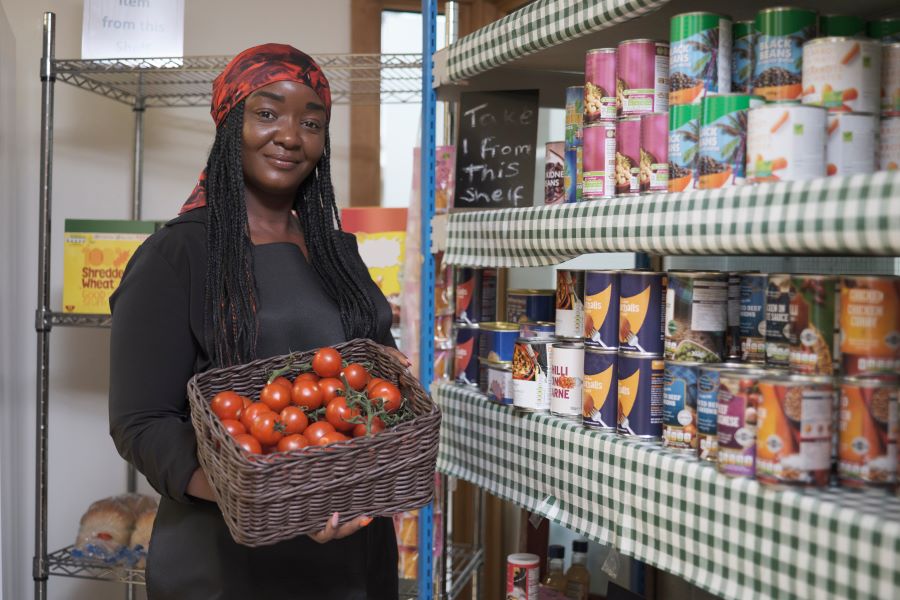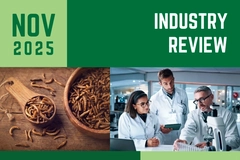
- Industry news
Industry news
- Category news
- Reports
- Key trends
- Multimedia
Multimedia
- Journal
- Events
- Suppliers
Suppliers
- Home
- Industry news
Industry news
- Category news
- Reports
- Key trends
- Multimedia
Multimedia
- Events
- Suppliers
Suppliers
SNAP cuts undermine “healthy America” goals, risking hunger for children and minority groups

The Make America Healthy Again (MAHA) agenda is driving cost cuts across the US, with the Supplemental Nutrition Assistance Program (SNAP) now under threat. The House Republicans’ proposed budget changes will impact hunger and increase the risk of chronic diseases, the Center for Science in the Public Interest (CSPI) tells Nutrition Insight. At the same time, CSPI says children’s health, food banks, and minority groups will face the most pressure.
CSPI deputy director Joelle Johnson warns: “Not only will rates of hunger rise, but millions will be at greater risk for chronic diseases and negatively impact children’s health trajectory for the rest of their lives.”

“These cuts underscore some of the fundamental contradictions that define the rhetoric around MAHA. You have cabinet officials talking about MAHA, addressing chronic health issues, and improving childhood nutrition. And yet Congress is moving forward with plans to cut benefits and put high barriers in place to prevent people from accessing healthy, nutritious food.”
Philip Kahn-Pauli, director of Legislative Affairs at CSPI, adds: “In 2021, the federal government passed the largest SNAP benefit increase in the program’s history, increasing benefits by 27%. This was a long overdue update that we supported, but even with the increase, benefits are still too low, coming in at just US$6.16 per day.”
“As part of the increase, the federal government is required to reevaluate the benefits every five years to ensure they keep pace with the cost of a healthy diet and inflation.”
However, the House GOP’s proposed budget and freeze on SNAP’s five-yearly evaluation are putting approximately 40 million people at risk, Johnson previously told us. We also explored how the cuts may benefit wealthy individuals and how US Secretary of Agriculture Brooke Rollins is pushing for reforms to reshape SNAP.
Food banks under pressure
Kahn-Pauli underlines that millions of people will probably turn to food banks and pantries due to SNAP cuts. The charitable food system is the last resort against food insecurity, frequently used by those who cannot or do not qualify for other federal nutrition programs.
 Black, Latino, and Native American households face higher food insecurity caused by systemic and structural factors, Johnson asserts.“But the systems were not built to handle this kind of demand, as we saw during COVID-19. This remains true now, especially as food banks are facing concerns related to the federal funding freeze, which could impact federal programs that provide food directly to food banks.”
Black, Latino, and Native American households face higher food insecurity caused by systemic and structural factors, Johnson asserts.“But the systems were not built to handle this kind of demand, as we saw during COVID-19. This remains true now, especially as food banks are facing concerns related to the federal funding freeze, which could impact federal programs that provide food directly to food banks.”
Vince Hall, Feeding America’s chief government relations officer, says: “Cuts to nutrition programs will also cause strain to the Feeding America network of over 200 food banks and 60,000 faith-based and charitable partners.”
“While food banks are working hard to keep their shelves stocked for their neighbors, they cannot absorb the large increase in demand that the proposed cuts will create. Many are struggling to meet sustained and heightened community needs because of higher food prices and fewer resources.”
He calls on lawmakers to think about how budget reconciliation plans would affect the 14 million children and nearly 50 million adults who go hungry in the US. “Since the pandemic, food insecurity has continued to increase, reaching its highest levels since the economic downturn in 2008.”
Widening disparity
According to Parrot, the cuts will impact all races and ethnicities across states. Those in poorer states and people in rural communities will be most affected. The budget will also shift costs in state, local, territorial, and tribal governments, which already face tougher fiscal conditions.
Black, Latino, and Native American households face higher food insecurity caused by systemic and structural factors, Johnson asserts.
“Households in already marginalized communities will feel these cuts’ worst and longest-lasting effects. We saw this play out during the COVID-19 pandemic when rates of food insecurity among Black and Latino households rose to more than two times that of white households.”
 Kahn-Pauli underlines that millions of people will probably turn to food banks and pantries due to SNAP cuts.“SNAP cuts paired with cuts across government equity programs and funding cuts impacting research into the social determinants of health mean we will see those communities facing worse health outcomes for years to come,” she continues.
Kahn-Pauli underlines that millions of people will probably turn to food banks and pantries due to SNAP cuts.“SNAP cuts paired with cuts across government equity programs and funding cuts impacting research into the social determinants of health mean we will see those communities facing worse health outcomes for years to come,” she continues.
Why the cuts?
House Budget Committee Chairman Jodey Arrington believes the budget blueprint is a “promissory note for our children to preserve the land of liberty and opportunity by safeguarding it from an unwieldy government and the unbridled spending, taxing, and regulating that threatens to destroy it.”
However, the Center on Budget and Policy Priorities warns that the cuts finance tax breaks for the wealthy. Its president, Sharon Parrot, laments that tax cuts for the top 1% (who earn more than US$743,000 per year) would give them an average tax break of US$62,000 annually. She underlines this amount is “significantly more than the total income of most households at risk of losing Medicaid or SNAP.”
CSPI’s Kahn-Pauli adds that the US Department of Agriculture (USDA) is facing staffing cuts due to the “indiscriminate actions” of the CEO of Tesla Motors, Elon Musk’s Department of Government Efficiency. “While staffing cuts have focused on probationary employees in many agencies and programs, further reductions in the federal workforce are likely on the horizon.”
“The loss of senior leaders, program analysts, and other subject matter experts will directly impair USDA’s ability to improve SNAP through clear analysis and improving programmatic efforts. Thus, shortcuts might result in longer-term costs as agencies struggle to develop new or improved solutions to these critical problems.”
Johnson argues against the potential cuts to save funds since SNAP is already a cost-saving program. “It alleviates food insecurity, thereby reducing healthcare spending. People who participate in SNAP have fewer doctor visits and hospitalizations.”
Medicaid threatened
Parrot states that the House Republicans are circulating proposals that will lower health and food assistance for people.
She further warns that “36 million people or more could be at risk of losing their health coverage through Medicaid, and more than 40 million people could receive less help from SNAP to buy groceries, millions of them potentially losing their food assistance altogether.”
“The loss of Medicaid means, for example, a parent can’t get cancer treatment, and a young adult can’t get insulin to control their diabetes,” Parrot concludes. “Cuts to food assistance mean a parent skips meals so their children can eat or an older person who lost their job has no way to buy groceries.”












